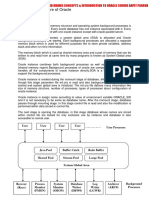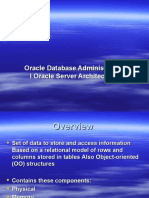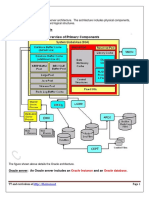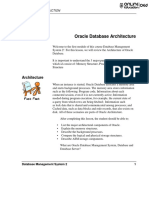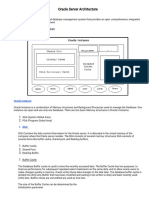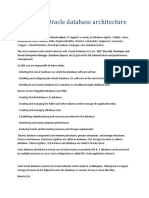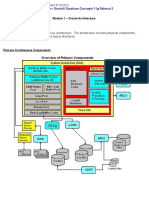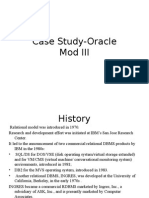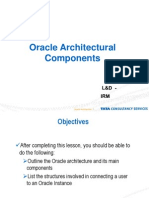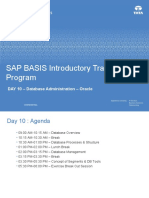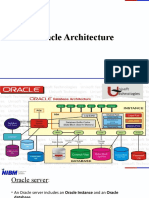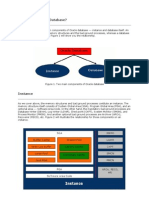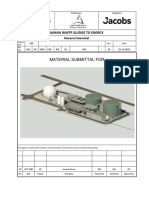0% found this document useful (0 votes)
25 views11 pagesChapter 5 Memory Architecture
The document provides an overview of Oracle's Memory Architecture, detailing the components of the Oracle Database and Oracle Instance, including System Global Area (SGA) and Program Global Area (PGA). It explains the purpose and structure of SGA, which includes various memory structures like Database Buffer Cache and Shared Pool, as well as the role of background processes in managing database operations. Additionally, it describes user and server processes, their interactions, and specific background processes such as the Database Writer and Log Writer that ensure data integrity and performance.
Uploaded by
ParthCopyright
© © All Rights Reserved
We take content rights seriously. If you suspect this is your content, claim it here.
Available Formats
Download as DOCX, PDF, TXT or read online on Scribd
0% found this document useful (0 votes)
25 views11 pagesChapter 5 Memory Architecture
The document provides an overview of Oracle's Memory Architecture, detailing the components of the Oracle Database and Oracle Instance, including System Global Area (SGA) and Program Global Area (PGA). It explains the purpose and structure of SGA, which includes various memory structures like Database Buffer Cache and Shared Pool, as well as the role of background processes in managing database operations. Additionally, it describes user and server processes, their interactions, and specific background processes such as the Database Writer and Log Writer that ensure data integrity and performance.
Uploaded by
ParthCopyright
© © All Rights Reserved
We take content rights seriously. If you suspect this is your content, claim it here.
Available Formats
Download as DOCX, PDF, TXT or read online on Scribd
/ 11


